
1920–2020 Prague–Tokyo - presentation of the publication
Source
Galerie Jaroslava Fragnera
Galerie Jaroslava Fragnera
Publisher
Tisková zpráva
07.05.2021 16:50
Tisková zpráva
07.05.2021 16:50
Czech Republic
Prague
Old City
The Jaroslav Fragner Gallery publishes a comprehensive publication on 100 years of mutual interaction between Japanese and Czech culture and architecture and opens the interior part of the exhibition.
On the occasion of the exhibition 1920–2020 Prague–Tokyo / influences, parallels, hints of commonality, the Jaroslav Fragner Gallery releases a publication of the same name. This extensive project addresses the Czech-Japanese phenomenon in architecture from various perspectives and on an unprecedented scale. Over twenty Czech and Japanese historians, theorists, and architects who track not only architecture but also connections in the field of fine and applied arts or landscape creation have contributed. The architecture of the entire century is presented on nearly 300 pages, from Japanese buildings by Jan Letzel, Bedřich Feuerstein, and especially Antonín Raymond, who is regarded as one of the founders of modern architecture in Japan, to the current works of the younger generation. In addition to the previously mentioned figures, readers will become acquainted with the reflections of Japanese creation in the Czech avant-garde, the influence of the Kacura villa in the post-war period, the urban development of Japanese metropolises, the utopian visions of superstructures towering over cities from the sixties, relationships to art, or attitudes towards traditional architecture, regionalism, and sustainability. The publication also touches on the significance of glass art, reflections of Japanese gardens, as well as the aesthetics and architecture of the tea ceremony, heritage conservation, or the specific conception of space in ma. The listed thematic areas are also accompanied by a number of reproductions of artworks and photographs by Czech and Japanese authors. Several chapters presented in the form of interviews with architects and theorists, including an exclusive interview with Terunobu Fujimori and Vladimír Šlapeta, may be particularly engaging for readers. The publication is released in Czech and English.
As of this week, the internal spaces of the gallery are open to the public, making the complete exhibition 1920–2020 Prague–Tokyo / influences, parallels, hints of commonality accessible. Until now, only a part of it in the courtyard of the Bethlehem Chapel could be visited. The exhibition maps in an attractive form the intense century of mutual influence between Czech and Japanese architecture. Here, one can find dozens of models, photographs, and artworks, including many unique pieces, as well as numerous Japanese authors who have not previously exhibited in the Czech Republic, alongside Czech authors whose works have been realized directly in Japan or significantly influenced by Japanese architecture. The gallery features models of the Saint Paul Church in Karuizawa and the Music Center of Gunma Prefecture by the legendary architect of Czech origin Antonín Raymond, who is considered one of the founders of modern architecture in Japan. Other new models include a replica of the famous Czechoslovak pavilion for Expo 1970 in Osaka by architects Viktor Rudiš, Vladimír Palla, and Aleš Jenček, as well as the iconic Nakagin Capsule Tower (1972) and works by Sō Fujimoto or Atelier Bow-Wow. Visitors will also be captivated by the tea rooms Hikusugi-An and Dorobune-An, designed by Terunobu Fujimori.
The exhibition is complemented by artworks by Patrik Hábl, Jindřich Zeithamml, Michal Cihlář, Marek Ther, Veronika Richterová, and Epos 257. Jakub Fišer created a site-specific installation for the exhibition—a tea pavilion.
An integral part of the exhibition, which is set to be presented in Japan in collaboration with the Czech Center in Tokyo, is also a short online video documentary freely available on the YouTube channel of the Jaroslav Fragner Gallery, featuring the exhibition and specific works by the authors themselves.
The project was prepared as part of the celebrations of the 100th anniversary of relations between Japan and the Czech Republic and has received patronage from Tomáš Petříček, Minister of Foreign Affairs of the Czech Republic, and under the honorary patronage of the Embassy of Japan in the Czech Republic. The exhibition will run until June 13, 2021. Information on accompanying programs is continuously updated at www.gjf.cz.
Although contacts between Japan and the Czech Republic began as early as pre-modern times, and their flourishing was significantly supported by the international phenomenon of "Japanophilia" or Japonism, intense interest in the architecture of both countries began in the 1920s. Two years after the establishment of the independent republic, official diplomatic relations were established, continuing the significant contacts from the 19th century (for example, chargé d'affaires Heinrich Coudenhove-Kalergi, who lived in the Poběžovice castle with his Japanese wife). At that time, we observe a systematic exploration of Japanese architecture on one side and the mapping of the Czech architectural scene by Japanese architects on the other. Like many other historical genealogies in our history, Czech-Japanese relations have been interrupted and restored. The exhibition and especially the publication approach the topic critically, capturing influence as a mutual phenomenon; in this sense, the exhibition can have a somewhat decolonizing character as it exposes the problem of stereotypes and misinformation while also giving space to both sides in the highest possible balance. The concept of the exhibition consciously turned away from following a linear chronology of events. We adhere to a timeline only suggestively in the concept. Instead of a panorama of history, several significant themes are problematized, such as Japanese aesthetics or the phenomenon of glass. This framework allowed for the selection and exhibition of a group of avant-garde architects from both the past and the present. Many Japanese authors will be exhibited in the Czech Republic for the first time. This thematic approach also allowed for the application of a range of nuances that we can capture if we thoroughly study the historical relationship between both countries: from friendship and strong mutual influence to subtle hints of commonality. The Jaroslav Fragner Gallery has long tracked the theme of Japanese architecture, most recently drawing attention to it in an exhibition dedicated to leading Japanese architect Kengo Kuma. Previously, it showcased personalities such as Furuiči Tecuo, Antonín Raymond, and Atelier Bow-Wow.
Publication
Authors: Helena Čapková, Vlasta Čiháková Noshiro, Milan Hlaveš, Kuma Kengo, Dan Merta, Terezie Nekvindová, Osamu Okamura, Klára Pučerová, David Vávra, Jan Vranovský, Karel Vranovský, Liana Rosinová, Sakurai Jošio, Petr Stolín, Filip Šenk, Vladimír Šlapeta, Petr Šmídek, Adam Štěch, Aleš Trnka, and Zdeňka Němcová Zedníčková
Graphic design: Robert V. Novák
320 pages, 200×275 mm, 590 CZK
Exhibition
Curators / Helena Čapková, Dan Merta
Architectural design / Jakub Fišer
Photo, video / Jiří Straka, Jan Strejcovský
Graphics / Robert V. Novák
Production / Klára Pučerová, Klára Bártová
On the occasion of the exhibition 1920–2020 Prague–Tokyo / influences, parallels, hints of commonality, the Jaroslav Fragner Gallery releases a publication of the same name. This extensive project addresses the Czech-Japanese phenomenon in architecture from various perspectives and on an unprecedented scale. Over twenty Czech and Japanese historians, theorists, and architects who track not only architecture but also connections in the field of fine and applied arts or landscape creation have contributed. The architecture of the entire century is presented on nearly 300 pages, from Japanese buildings by Jan Letzel, Bedřich Feuerstein, and especially Antonín Raymond, who is regarded as one of the founders of modern architecture in Japan, to the current works of the younger generation. In addition to the previously mentioned figures, readers will become acquainted with the reflections of Japanese creation in the Czech avant-garde, the influence of the Kacura villa in the post-war period, the urban development of Japanese metropolises, the utopian visions of superstructures towering over cities from the sixties, relationships to art, or attitudes towards traditional architecture, regionalism, and sustainability. The publication also touches on the significance of glass art, reflections of Japanese gardens, as well as the aesthetics and architecture of the tea ceremony, heritage conservation, or the specific conception of space in ma. The listed thematic areas are also accompanied by a number of reproductions of artworks and photographs by Czech and Japanese authors. Several chapters presented in the form of interviews with architects and theorists, including an exclusive interview with Terunobu Fujimori and Vladimír Šlapeta, may be particularly engaging for readers. The publication is released in Czech and English.
As of this week, the internal spaces of the gallery are open to the public, making the complete exhibition 1920–2020 Prague–Tokyo / influences, parallels, hints of commonality accessible. Until now, only a part of it in the courtyard of the Bethlehem Chapel could be visited. The exhibition maps in an attractive form the intense century of mutual influence between Czech and Japanese architecture. Here, one can find dozens of models, photographs, and artworks, including many unique pieces, as well as numerous Japanese authors who have not previously exhibited in the Czech Republic, alongside Czech authors whose works have been realized directly in Japan or significantly influenced by Japanese architecture. The gallery features models of the Saint Paul Church in Karuizawa and the Music Center of Gunma Prefecture by the legendary architect of Czech origin Antonín Raymond, who is considered one of the founders of modern architecture in Japan. Other new models include a replica of the famous Czechoslovak pavilion for Expo 1970 in Osaka by architects Viktor Rudiš, Vladimír Palla, and Aleš Jenček, as well as the iconic Nakagin Capsule Tower (1972) and works by Sō Fujimoto or Atelier Bow-Wow. Visitors will also be captivated by the tea rooms Hikusugi-An and Dorobune-An, designed by Terunobu Fujimori.
The exhibition is complemented by artworks by Patrik Hábl, Jindřich Zeithamml, Michal Cihlář, Marek Ther, Veronika Richterová, and Epos 257. Jakub Fišer created a site-specific installation for the exhibition—a tea pavilion.
An integral part of the exhibition, which is set to be presented in Japan in collaboration with the Czech Center in Tokyo, is also a short online video documentary freely available on the YouTube channel of the Jaroslav Fragner Gallery, featuring the exhibition and specific works by the authors themselves.
The project was prepared as part of the celebrations of the 100th anniversary of relations between Japan and the Czech Republic and has received patronage from Tomáš Petříček, Minister of Foreign Affairs of the Czech Republic, and under the honorary patronage of the Embassy of Japan in the Czech Republic. The exhibition will run until June 13, 2021. Information on accompanying programs is continuously updated at www.gjf.cz.
Although contacts between Japan and the Czech Republic began as early as pre-modern times, and their flourishing was significantly supported by the international phenomenon of "Japanophilia" or Japonism, intense interest in the architecture of both countries began in the 1920s. Two years after the establishment of the independent republic, official diplomatic relations were established, continuing the significant contacts from the 19th century (for example, chargé d'affaires Heinrich Coudenhove-Kalergi, who lived in the Poběžovice castle with his Japanese wife). At that time, we observe a systematic exploration of Japanese architecture on one side and the mapping of the Czech architectural scene by Japanese architects on the other. Like many other historical genealogies in our history, Czech-Japanese relations have been interrupted and restored. The exhibition and especially the publication approach the topic critically, capturing influence as a mutual phenomenon; in this sense, the exhibition can have a somewhat decolonizing character as it exposes the problem of stereotypes and misinformation while also giving space to both sides in the highest possible balance. The concept of the exhibition consciously turned away from following a linear chronology of events. We adhere to a timeline only suggestively in the concept. Instead of a panorama of history, several significant themes are problematized, such as Japanese aesthetics or the phenomenon of glass. This framework allowed for the selection and exhibition of a group of avant-garde architects from both the past and the present. Many Japanese authors will be exhibited in the Czech Republic for the first time. This thematic approach also allowed for the application of a range of nuances that we can capture if we thoroughly study the historical relationship between both countries: from friendship and strong mutual influence to subtle hints of commonality. The Jaroslav Fragner Gallery has long tracked the theme of Japanese architecture, most recently drawing attention to it in an exhibition dedicated to leading Japanese architect Kengo Kuma. Previously, it showcased personalities such as Furuiči Tecuo, Antonín Raymond, and Atelier Bow-Wow.
Publication
Authors: Helena Čapková, Vlasta Čiháková Noshiro, Milan Hlaveš, Kuma Kengo, Dan Merta, Terezie Nekvindová, Osamu Okamura, Klára Pučerová, David Vávra, Jan Vranovský, Karel Vranovský, Liana Rosinová, Sakurai Jošio, Petr Stolín, Filip Šenk, Vladimír Šlapeta, Petr Šmídek, Adam Štěch, Aleš Trnka, and Zdeňka Němcová Zedníčková
Graphic design: Robert V. Novák
320 pages, 200×275 mm, 590 CZK
Exhibition
Curators / Helena Čapková, Dan Merta
Architectural design / Jakub Fišer
Photo, video / Jiří Straka, Jan Strejcovský
Graphics / Robert V. Novák
Production / Klára Pučerová, Klára Bártová
The English translation is powered by AI tool. Switch to Czech to view the original text source.
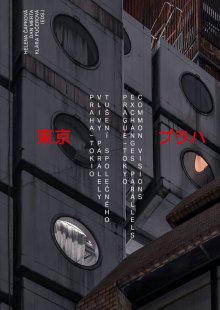
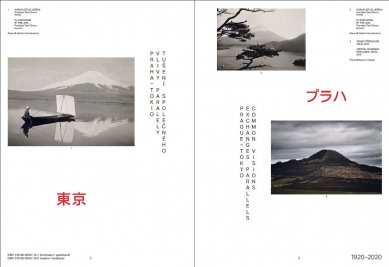
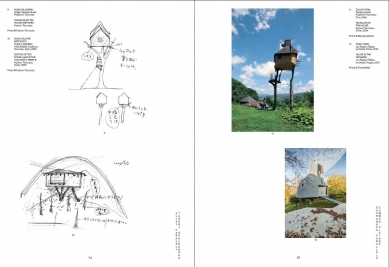
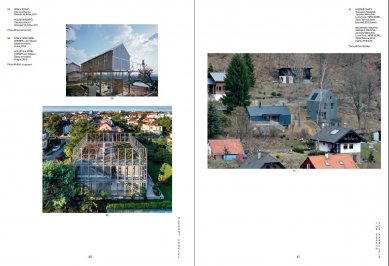
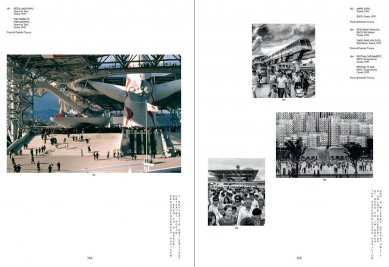
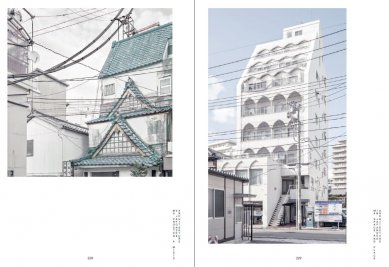
0 comments
add comment











